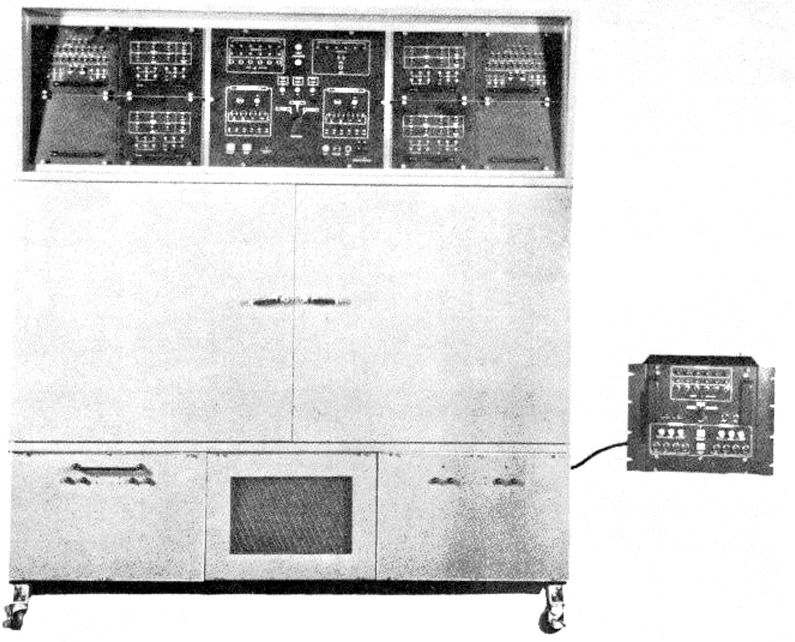TD-285
From FortWiki
|
TD-285 Gap Filler Multiplexer Set - A Gap Filler Radar Multiplexer set built by Budd Electronics. Used at long-range radar sites to multiplex the long-range radar data with data from up to six short-range gap-filler radar sites and to send the multiplexed result to an FSQ-7 SAGE computer. The Multiplexer is a link in the transmission of data from both long-range radar and gap-filler radar sites to the SAGE System Central Computer. The Multiplexer receives any combination of inputs, up to six, from the FST-1 or FPS-14, and FPS-18 Gap Filler radars. The gap filler outputs are interleaved with the output of a long-range radar site. The information is then transmitted over a single pair of telephone wires. Signals from the AN/FST-2 control the reading out and transmission of the store information. Permission to transmit is alternated between the stored gap filler data and long-range radar output. This permits the use of only one pair of telephone lines instead of seven. Multiplexer operation can be remotely controlled from a distance up to 150 feet. TD-285 Gap Filler Multiplexer
See Also: Sources:
Links:
| |||||||||||||||||||||||||||||||||||||||||||||||||||||||||||||||||||||||||||||||||
